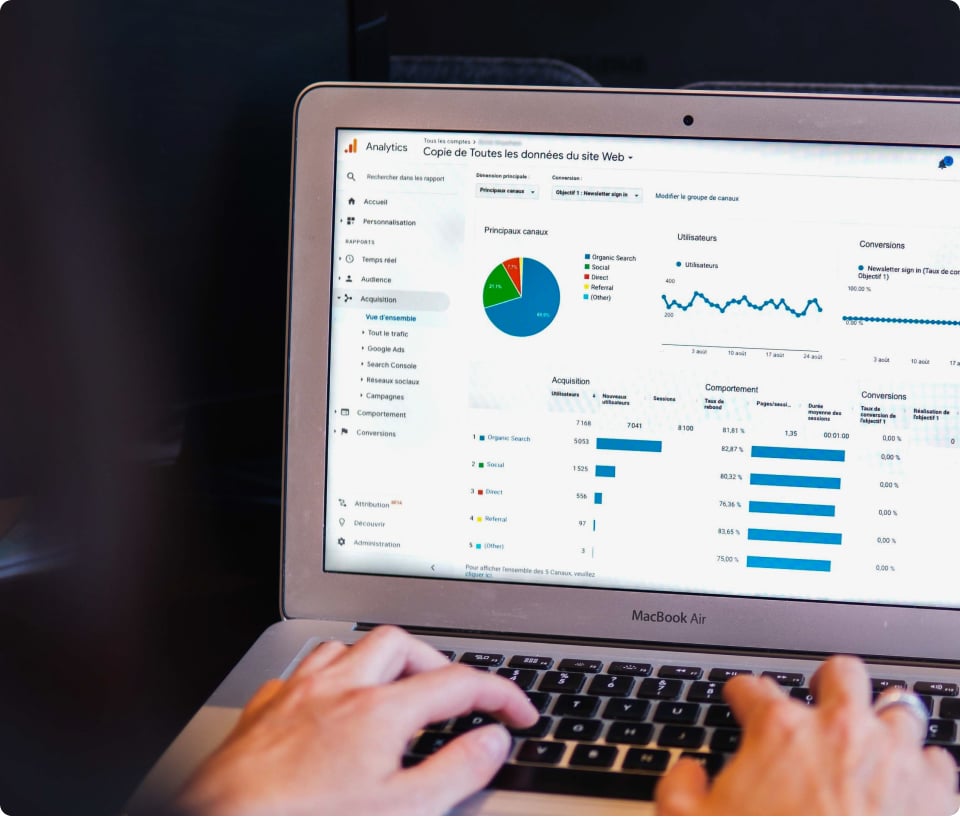
SAP Controlling (CO)
Coordinate and improve organizational processes with SAP Controlling.



SAP CO — a Reliable Tool for Financial Management
To make confident business decisions, you need to know which products or services bring profit and which ones don’t.
SAP Controlling (SAP CO) helps companies see their actual internal costs and take the right actions based on facts, not assumptions. The module is responsible for collecting, tracking, and analyzing internal financial data to give companies the visibility they need to manage money wisely.
SAP CO works together with SAP FI (Financial Accounting) as a connected system. FI handles external reporting, such as taxes, invoices, and balance sheets, while CO manages internal financial control. The modules share data, helping you see both sides of your company’s finances: what was spent and how it can be improved.
But tools alone don’t solve business problems. They must be implemented and fine-tuned with your company's specifics in mind, and that’s exactly where the LeverX team can help. With years of SAP experience and real project insights, we’ll make sure the system works the way your business needs it to.
How SAP CO Supports Your Business
Comprehensive cost accounting
Real-time budget control
Data-based decision making
Elimination of process losses
Precise cost calculation
Data-driven planning
SAP CO Core Components
Cost Center Accounting (CO-OM-CCA)
Internal Orders (CO-OM-OPA)
Cost Element Accounting (CO-OM-CEL)
Activity-Based Costing (CO-OM-ABC)
Profitability Analysis (CO-PA)
Profit Center Accounting (EC-PCA)
Planning & Budgeting
Product Costing (CO-PC)
Allocations & Settlements
Main Functions of SAP CO

Cost and income accounting
- Tracks all expenses by department, project, and activity
- Records all income with source details
- Separates direct and indirect costs
- Supports internal cost transfers between departments

Planning and budgeting
- Creates budgets for any time period (year, quarter, etc.)
- Allows multiple versions to test different scenarios
- Uses past data and forecasts for planning
- Offers detailed budget planning by cost items

Deviation analysis
- Compares planned and actual data by category and timeframe
- Automatically highlights problem areas
- Visual reports show where things went off track
- Helps analyze deviations by department, project, or process

Actual cost analysis
- Breaks down costs by departments, items, and periods
- Allows flexible reporting with filters
- Shows cost structure and key contributors
- Links real expenses to specific business objects

Planned cost analysis
- Helps evaluate how realistic the plans are
- Compares different budget versions
- Highlights where expectations and reality don’t match
- Supports early decision-making and adjustment

Cost recalculation & settlement
- Automates month-end distribution of indirect costs according to rules
- Supports various allocation bases (output, floor area, headcount)
- Recalculates final costs at period close for accuracy

Performance evaluation
- Compares cost vs. results by responsibility center
- Generates financial KPIs from actual data
- Assesses profitability of areas, products and teams
- Integrates with incentive schemes through analytics

Data management & configuration
- Defines and edits accounting object structures (cost centers, profit centers, etc.)
- Configures data flow paths within SAP CO
- Updates cost and revenue reference tables without downtime
- Ensures data quality and completeness for reliable reporting
How We Can Help

Consulting

Implementation

Integration

Support

Application management
Integrating SAP CO With Other SAP Modules
SAP CO doesn’t work in isolation; it connects with other SAP modules to give you a clearer picture of your finances. These integrations ensure that internal cost accounting always uses the latest and most accurate data from different business areas.
Here’s how it works in practice:
- SAP FI (Financial Accounting): The connection between SAP CO and SAP FI is essential. FI records primary financial transactions, such as invoices or expenses, and passes them directly to CO. This avoids duplicate entries and keeps both systems aligned. Without this link, SAP CO simply can’t operate.
- SAP MM (Materials Management): When your company buys materials or moves stock, SAP MM captures that data. SAP CO uses it to track material costs and assign them to cost centers, projects, or production orders. It helps you understand what your resources actually cost.
- SAP SD (Sales and Distribution): Sales and revenue figures from SD are sent to CO automatically. This lets you break down profitability by customer, product, or region — all based on real numbers, not assumptions.
- SAP PP (Production Planning): Data from production orders, including materials used and hours worked, flows into CO. This gives you the actual cost of manufacturing and shows how efficient your production processes really are.
- SAP HCM (Human Capital Management): Personnel costs like salaries, bonuses, and time tracking data come from SAP HCM. SAP CO uses this to distribute labor costs across departments, projects, or cost centers, helping you see how much your teams really cost.
- SAP Analytics Cloud: For better reporting, you can send SAP CO data to SAP Analytics Cloud. It turns raw numbers into clear dashboards and visual reports, making it easier to spot trends and make decisions quickly.
Industries We Serve
Why Choose LeverX as Your SAP Implementation Provider?
Proven track record
Industry experts
SAP partnership
Quality and security
Investment in innovation
Flexibility
Implementation Roadmap
SAP Controlling into six essential stages:
- Current Processes Evaluation: Assess existing business processes and identify the organization's needs.
- Defining Technical Requirements: Create a detailed specification of the functional and technical needs of the new system.
Discover
- Setting Goals and Objectives: Establish and agree on the goals to be achieved throughout the project.
- Assembling the Project Team: Appoint team members and define their roles and responsibilities.
- Project Plan Development: Create a comprehensive plan that outlines project phases, timelines, resources, and key performance indicators.
- Budget Determination: Estimate and approve the budget.
- Specifications Preparation: Develop the technical and functional specifications for the development team.
Prepare
- Ensuring Business Requirements are Met: Check that SAP CO aligns with business requirements and project objectives.
- Data Validation: Verify the accuracy and compliance of the data.
Explore
- Data Migration: Transfer data from existing systems to the new one.
- System Configuration: Set up the solution according to requirements and specifications.
- Customization: Develop additional features and modules, if the standard solution does not meet all needs.
- Integrations: Configure SAP CO to work with other IT systems and applications.
Realize
- Testing: Perform functional, integration, regression, and load testing to ensure that all works correctly.
- User Training: Organize sessions to help users become familiar with the new system.
Deploy
- System Readiness Check: Verify that the system is ready for operational use.
- Launch: Officially transition to active use of SAP CO.
- Ongoing Support: Continuously monitor solution performance to identify and resolve any issues.
Run
FAQ
What is SAP Controlling (CO)?
How does SAP CO change in an SAP S/4HANA environment? Is it still a separate module?
SAP S/4HANA's functionalities of SAP CO and SAP FI are merged into a single component called the Universal Journal (table ACDOCA). While it is no longer technically a separate module, the core controlling processes like cost center accounting and profitability analysis still exist. The key benefit is that financial and controlling data reside in one table, eliminating data redundancy and allowing for real-time, integrated reporting without reconciliation. This is a significant architectural shift that requires expert guidance to leverage fully.
What is the difference between Costing-based CO-PA and Account-based CO-PA?
What is a practical example of a process that uses both SAP FI and SAP CO?
What are the most common challenges during an SAP CO implementation?
- Defining allocation rules: Deciding precisely how to distribute shared costs (like rent or IT services) across different departments can be complex and politically sensitive.
- Master data governance: Establishing and maintaining a clean, logical structure for cost centers, profit centers, and internal orders is crucial for meaningful reporting.
- Change management: Clear communication and support are required to train users to move from simple spreadsheet-based tracking to a structured, integrated system.
What standard reporting tools are available within SAP CO?
SAP CO comes with a robust set of standard reports for internal analysis, often called "drill-down" reports. These allow you to analyze costs and revenues using cost centers, internal orders, or profit centers. You can navigate from a high-level summary down to individual line-item details. While these tools are powerful for controllers and accountants, many companies supplement them with tools like SAP Analytics Cloud for more user-friendly, visual dashboards for executive management.
Can SAP CO be implemented for a company that doesn't use SAP for its core financials?
While SAP CO is designed for seamless integration with SAP FI, it can technically be implemented in a standalone capacity. This would require building custom interfaces to feed financial posting data from your non-SAP financial system into SAP CO. However, this approach is complex, adds maintenance overhead, and loses the key benefit of real-time integration. In most cases, it is far more effective to implement SAP CO and SAP FI together.
Contact Us
What happens next?
-
1
An expert will reach out to you to discuss your specific needs and requirements.
-
2
We'll sign an NDA to ensure any sensitive information is kept secure and confidential.
-
3
We'll work with you to prepare a customized proposal based on the project's scope, timeline, and budget.
years of expertise
projects
professionals
Contact Us
CONTACT US
If you are looking for an SAP Global Strategic Supplier or Technology Partner for your business, fill out the form below, and we will contact you at short notice.